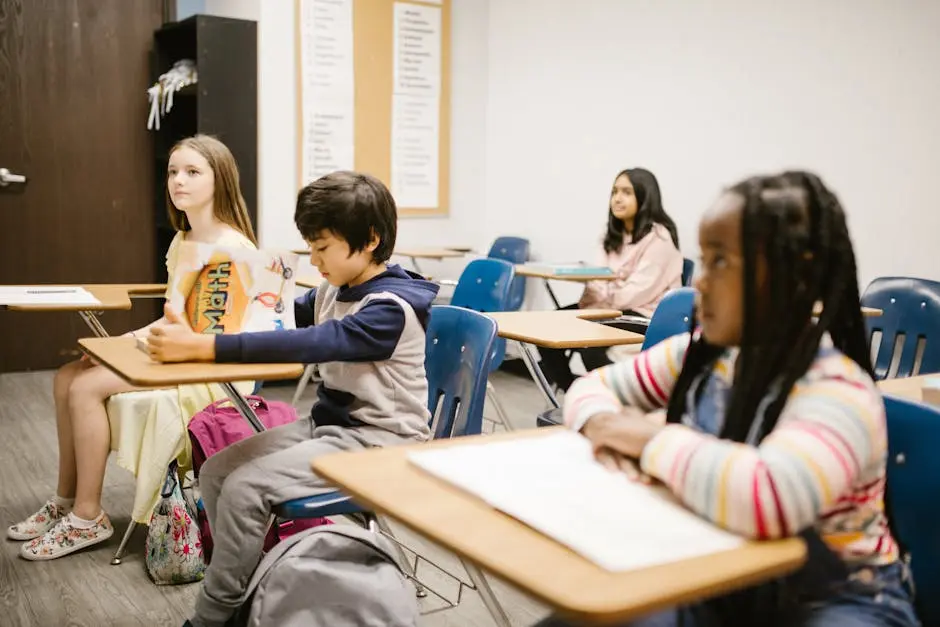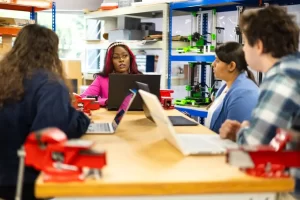Social and Emotional Learning (SEL) has become an essential component in education, helping students develop crucial skills for their personal and academic success. But how can educators effectively integrate SEL into their academic content? This blog will explore various strategies and approaches to seamlessly weave SEL principles into classroom lessons, making learning more holistic and impactful for students.
Understanding SEL: A Foundation for Integration
Prior to exploring integration strategies, it is important to learn about what SEL is and why it is important. SEL means teaching students the skills of self-awareness, self-management, social awareness, relationship skills, and responsible decision-making. These skills form the foundation for improved academic performance and healthier relationships.
Essentially, SEL helps students identify their emotions as well as the emotions of others. It is this understanding that can transform how they interact, preparing them to be able to mediate conflicts and collaborate successfully with others. The addition of SEL to curriculum materials is not just a sound decision;
it is crucial in order to balance out the learning experience. Moreover, SEL contributes to a more positive classroom environment. By teaching empathy and compassion, teachers are opening the door to a space where all of the students will feel welcome and heard. That sense of belonging can greatly enhance students’ motivation and motivation to learn.
Embedding SEL in Curriculum Design
One effective way to integrate SEL into academic content is through curriculum design. By aligning learning objectives with SEL competencies, educators can create lessons that not only meet academic standards but also nurture students’ emotional and social development.
For instance, while teaching literature, educators can facilitate discussions that explore characters’ emotions and decisions. This practice encourages students to reflect on their own feelings and situations, enhancing both their comprehension and empathetic skills. Connecting texts to personal experiences can make literature come alive for students.
Additionally, integrating SEL doesn’t have to be a separate focus; it can seamlessly merge with subjects like science and math. Consider a project-based learning scenario where students work in groups to solve real-world problems. Not only is this an engaging way to learn core content, but it also cultivates teamwork, negotiation, and problem-solving skills.
Creating a Supportive Classroom Environment
A supportive classroom environment is key to integrating SEL. This includes fostering positive relationships, encouraging open communication, and promoting a sense of belonging. Teachers can implement strategies like morning meetings or community circles to build a strong classroom community.
Consider the benefits of a morning circle where students can share their thoughts and feelings before diving into lessons. This routine not only creates a safe space for expression but also sets a tone for collaboration throughout the day. Students who feel safe are more likely to engage and take risks in their learning.
Additionally, displaying student work prominently can enhance their sense of belonging and pride in the classroom. When students see their efforts valued and recognized, it reinforces their commitment to both the learning process and their peers, fostering a nurturing environment for SEL to flourish.
Using Collaborative Learning to Enhance SEL Skills
Collaborative learning activities are excellent for enhancing SEL skills. Group projects, peer reviews, and team-building exercises can help students practice teamwork, communication, and empathy, all crucial components of SEL.
Engaging in group projects encourages students to represent diverse perspectives and learn compromise. Such experiences not only develop critical 21st-century skills but also promote social ties that can lead to lasting friendships. More than just academic success, collaborative learning is a stepping stone towards building a supportive network among peers.
Moreover, peer review sessions can teach students constructive feedback skills. This process not only sharpens their analytical abilities but also builds their capacity for resilience when receiving critique. By recognizing and valuing each other’s contributions, students develop a sense of community and shared purpose.
Integrating Reflective Practices in Academic Lessons
Reflective practices such as journaling or group discussions can deepen students’ understanding of their emotions and social interactions. Integrating regular reflection into lessons allows students to connect their academic work to their personal growth.
Encouraging students to maintain a reflective journal not only helps them track their academic progress but also provides an outlet for emotional expression. This practice cultivates self-awareness, allowing students to identify their strengths and areas for improvement while reflecting on their interactions with peers.
Furthermore, structured group discussions can facilitate deeper connections among classmates. When students share their reflections, they do more than just relate— they support each other’s personal and academic journeys. This sense of shared experience fosters empathy and enriches both the learning atmosphere and individual growth.
If you’re having a hard time integrating SEL to your lesson plans and activities, LYS has already made it easy for you! The LYS app provides you with ready-made lesson plans that has already combined SEL to all plans of a variety of subjects and grade levels!
Assessing SEL Integration Effectively
Finally, assessing the effectiveness of SEL integration is crucial for ongoing improvement. Educators can use surveys, feedback sessions, and observation checklists to evaluate how well SEL strategies are being implemented and their impact on students.
Regular check-ins with students can provide invaluable insights into their experiences and perceptions of SEL practices within the classroom. Listening actively to their feedback fosters a culture of transparency and involvement, helping educators adjust their approaches based on what works best.
Beyond quantitative assessments, personal reflections from students about their emotional and social developments can be illuminating. This qualitative data allows educators to make informed decisions that are responsive to the needs and preferences of their students, ultimately leading to a more integrated and effective SEL approach.
Read more benefits of SEL from National University!
Embracing the SEL Journey
Integrating SEL into academic content is not just a trend, but a vital educational strategy that promotes student well-being and academic success. By using the approaches discussed, educators can create a nurturing environment where social and emotional growth thrives alongside academic achievement. Embracing SEL provides students with the tools they need to navigate their educational journey and beyond.








